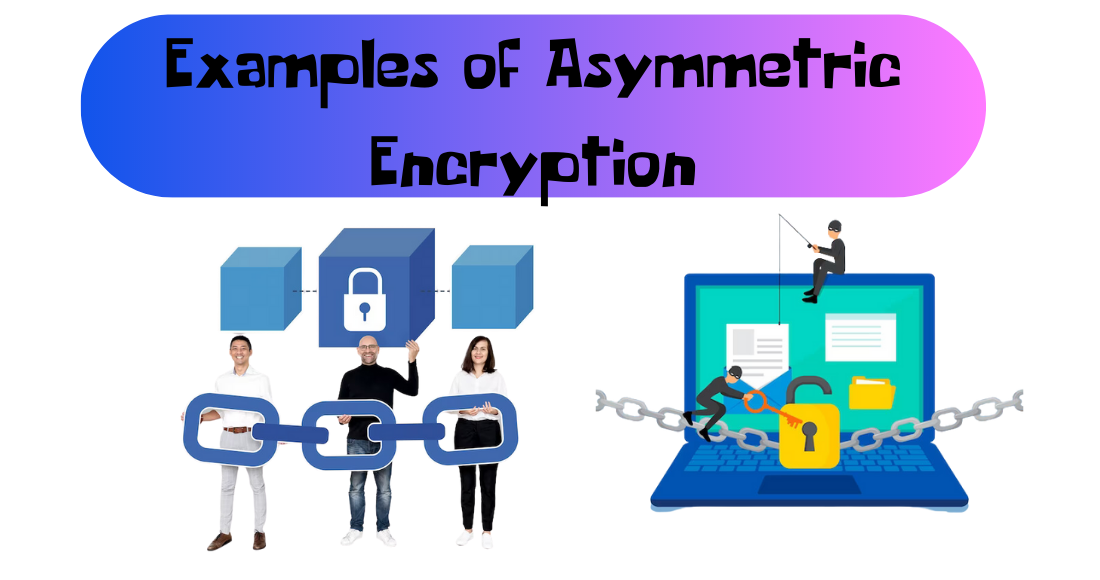Examples of asymmetric encryption refer to instances where asymmetric encryption, also known as public-key encryption, is utilized to secure digital information and communications. Asymmetric encryption is a cryptographic method that relies on a pair of keys: a public key and a private key. The public key is used for encryption, while the private key is used for decryption. This approach provides a high level of security and is widely employed in various digital applications to protect sensitive data. The article discusses ten real-world scenarios or applications where asymmetric encryption is applied to ensure the confidentiality and integrity of information. These examples illustrate how this encryption technique plays a crucial role in safeguarding our digital lives.
In the ever-evolving world of cybersecurity, asymmetric encryption plays a pivotal role in ensuring the confidentiality and integrity of sensitive information. This encryption method, also known as public-key encryption, employs a pair of keys – one public and one private – to secure data transmission. While the public key is used for encryption, only the corresponding private key can decrypt the data. This article explores ten real-world examples of asymmetric encryption, shedding light on how it safeguards our digital lives.
Examples of Asymmetric Encryption: Safeguarding Information in the Digital Age
Examples of Asymmetric Encryption: Safeguarding Information in the Digital Age are given below,
1. Secure Sockets Layer (SSL) and Transport Layer Security (TLS)
SSL and its successor, TLS, are cryptographic protocols widely used to establish secure connections between web browsers and servers. These protocols employ asymmetric encryption to initiate a secure session. When you see “https://” in your browser’s address bar, asymmetric encryption is at work, ensuring the confidentiality of data exchanged between your computer and the website.
2. Pretty Good Privacy (PGP)
PGP is an encryption program that provides cryptographic privacy and authentication for data communication. It uses asymmetric encryption to secure emails and files, allowing users to send sensitive information over the internet with confidence.

3. Secure Shell (SSH)
SSH is a network protocol used for securely connecting to remote systems. Asymmetric encryption ensures that the communication between your computer and the remote server remains confidential and free from eavesdropping.
4. Secure/Multipurpose Internet Mail Extensions (S/MIME)
S/MIME is a standard for public key encryption and digital signatures for emails. It uses asymmetric encryption to protect email content from prying eyes and to verify the sender’s authenticity.
5. Secure File Transfer Protocols (SFTP and SCP)
SFTP and SCP are protocols for securely transferring files over a network. They utilize asymmetric encryption to safeguard file transfers from unauthorized access.

6. Virtual Private Networks (VPNs)
VPNs enable secure communication over the internet by encrypting data traffic between your device and a remote server. Asymmetric encryption ensures that your online activities remain private, even on untrusted networks.
7. Digital Signatures
Digital signatures are used to verify the authenticity and integrity of digital documents or messages. Asymmetric encryption helps create these signatures, ensuring that they cannot be forged or altered.

8. Bitcoin and Cryptocurrencies
Cryptocurrencies like Bitcoin rely on asymmetric encryption to secure transactions. Public keys are used to generate wallet addresses, while private keys are essential for authorizing and validating transactions.
9. Secure VoIP Communication
Voice over Internet Protocol (VoIP) services like Skype and WhatsApp use asymmetric encryption to protect voice and video calls from interception, providing a secure means of communication.
10. Secure Browsing with Tor
The Tor network, often used for anonymous browsing, employs asymmetric encryption to ensure user privacy. It routes internet traffic through a series of nodes, making it difficult for anyone to trace a user’s online activities.
In conclusion, asymmetric encryption is an indispensable tool in our digital age, safeguarding our online interactions, communications, and transactions. These ten examples illustrate its versatility and importance in maintaining the confidentiality and integrity of our digital lives. As we continue to rely on technology for various aspects of our daily lives, understanding and appreciating the role of asymmetric encryption becomes increasingly crucial.

